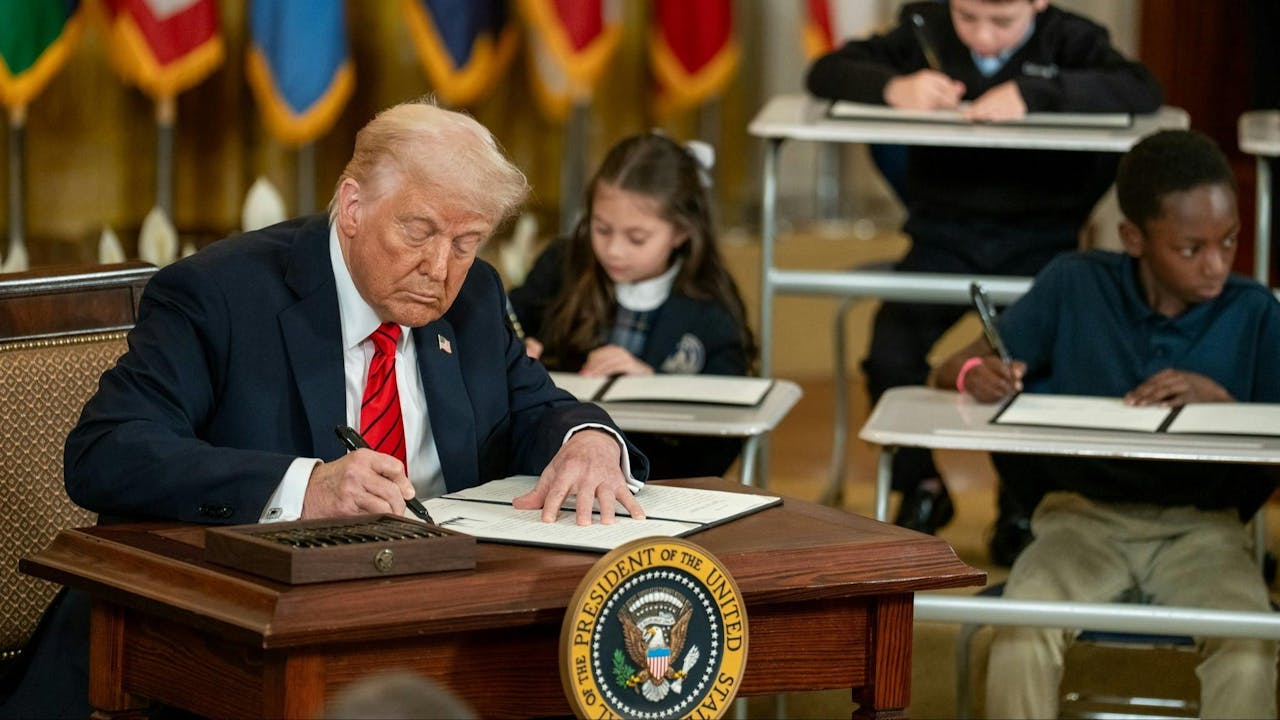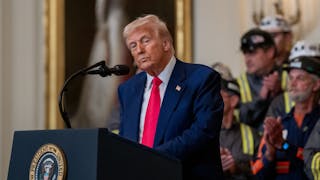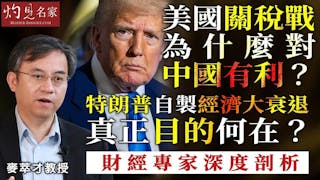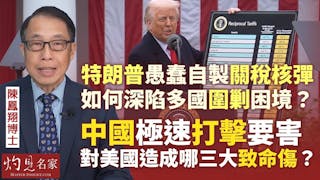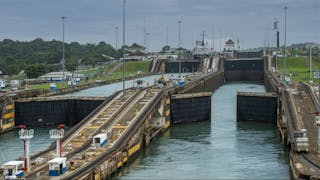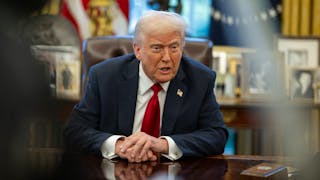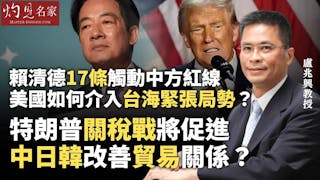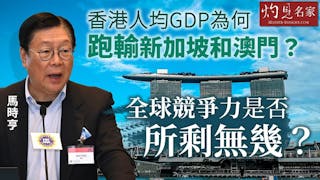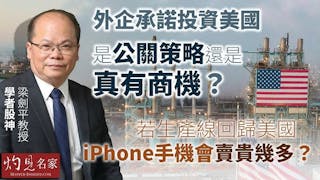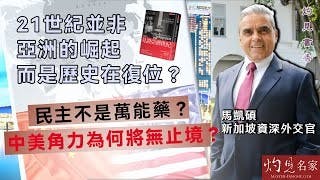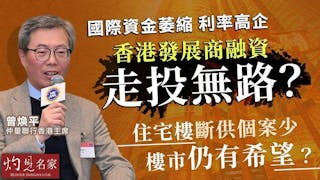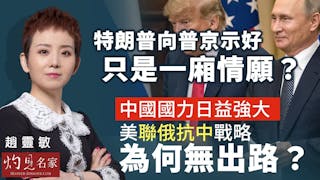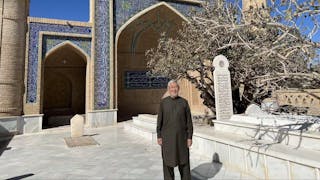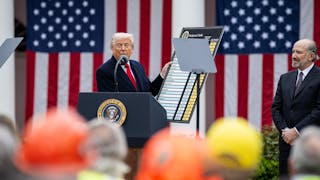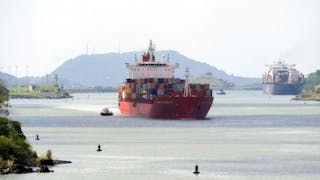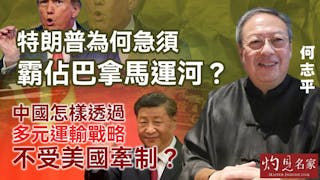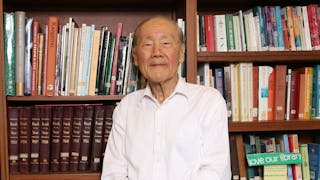在2025年1月美國總統特朗普正式入主白宮前,世界政治的動盪就已經從多國極端民族主義的抬頭,與及「中國威脅論」的認知中可見一斑。特朗普上任後,政治動盪更較之前激烈。這些民族主義和反中思潮的背後,不單反映了美國軍事霸權正面對更多擁有核武國家的挑戰,而且美國主導的單極世界亦邁向多極世界轉變。
第二次世界大戰結束後,世界出現了兩極格局,蘇聯與美國爭奪政治、軍事和經濟主導地位。然而,在美國的遏制政策和戈爾巴喬夫的開放和政治改革政策的共同影響下,蘇聯於1991年解體,導致單極世界的出現,美國成為全球唯一在經濟和軍事上的超級大國。
然而,2000年代初以來,隨着中國快速崛起,挑戰美國霸主的地位。許多美國盟友逐漸產生了所謂「中國威脅」的意識,將中國政權視為經濟和軍事的威脅。中國在南海主張領土主權的軍事行動亦被視為雄心勃勃,尤其那些不習慣看到中國快速發展的國家,視中國為「國安威脅」。孔子學院也被敵視中國的國家,視為推動統一戰線工作的文化機構,而不是能夠增進外國人對中國語言和文化了解、純粹的教育組織。
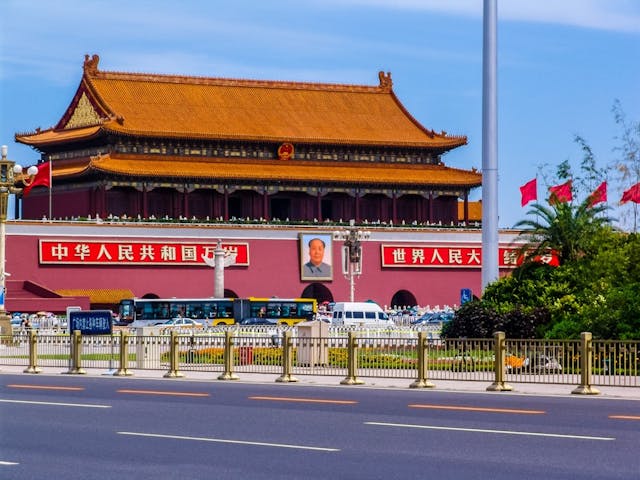
對外由「韜光養晦」轉向高調自信
「中國威脅論」從未受到很大質疑,原因可能是對所謂「黃禍」根深蒂固的偏見,另一原因是中國自2012年底以來已經改變了其外交政策,從鄧小平時代採取「韜光養晦」的低調做法,轉向了更加高調自信的風格。
2016年特朗普首次當選美國總統時,美國外交政策似乎是以犧牲軟實力為代價,實行自我保護主義;2017年美國退出《跨太平洋夥伴關係協定》更加向世界發出警告,即美國的領導地位比以往任何時候都更加自我保護,國際化程度愈來愈低。
2022年初俄羅斯入侵烏克蘭,引發了對歐洲地緣政治發展與和平的嚴重質疑。如果說俄羅斯總統普京熱衷於恢復蘇聯的舊領土邊界,那麼澤連斯基總統領導下的烏克蘭加入北約的意圖,確實對俄羅斯構成國家安全威脅,現時歐盟、北約和美國對烏克蘭的軍事支持隨時擦槍走火,可能引發更大規模的區域戰爭,隨着俄羅斯後來讓朝鮮軍隊參與支持俄方,更大的風險是引發一場全球戰爭。
2023年哈馬斯突襲以色列,其後以色列向哈馬斯的報復,突顯了極端民族主義的危險,不僅可能導致族群相互對立,也會使中東陷入新的政治軍事動盪危機。
特朗普主義使全球陷入動盪新時代
特朗普2.0將美國國家利益提升到前所未有的重要水平,特朗普主義使全球持續陷入動盪和不確定性的新時代,讓許多國家感到不安,從丹麥(美國正對其治下格陵蘭島虎視眈眈)以至加拿大都揚言,報復美國的互惠關稅政策。
特朗普對普京也抱持好感,試圖將美國對俄羅斯的傳統遏制政策轉變為對俄羅斯更友善的政策。為了避免美國被拖入與俄羅斯的代理人戰爭,特朗普及其國家安全團隊熱衷於與普京政府直接談判,但挑戰在於普京及其戰略家是否採取拖延策略,以及即使達成停火協議,俄羅斯是否不再對波蘭、波羅的海國家和其他歐盟國家構成軍事威脅。
可以說,特朗普2.0正在世界政治舞台上,造成比以往更多的動盪和不確定性。特朗普政府將中國視為軍事、經濟和技術威脅,繼續與中國進行貿易、關稅和科技戰。
外界對中國政府如何看待長和實業有限公司出售港口的商業交易爭議不絕,這表明中國希望總部位於香港的長和,將北京的國家利益置於該公司的經濟利益之上。巴拿馬運河的港口交易如何發展還有待觀察,但有一點肯定的是,以香港作為總部的中國商業公司將需要考慮政治風險評估,特別是在中美博弈下如何處理與美國有關的交易。

中東與東亞成為動盪潛在爆發點
目前世界政治的動盪有可能出現在多個爆發點,即使不是全球戰爭,也可能引發更大規模的區域戰爭。第一個爆發點仍然是中東,以色列和巴勒斯坦的任何極端民族主義都將繼續產生影響。美國最近對也門胡塞武裝的軍事攻擊,顯示以巴衝突有擴大到中東其他地區的危險。當然,胡塞叛軍對以色列船隻的攻擊,同樣有問題且高度危險。
另一個熱點是東亞,那裏日益親美、反中、反在野黨的台灣政權引起了中國大陸強烈口頭警告。北韓對日本在北海道安裝飛彈的警告、日本對北韓國家安全威脅的看法,以及南韓的政治不穩定,加劇了兩岸緊張局勢。中國和菲律賓之間的南海島礁爭端,也是另一個值得關注的潛在衝突領域。
最重要的是,只要俄烏戰爭仍未解決,它就有可能擴大為更大規模的歐洲戰爭。英國、法國和德國對美國針對俄烏兩國外交政策改變,感到不滿。然而,透過武裝烏克蘭抵禦俄羅斯的入侵,這些歐盟核心國家正在違背建立大俄羅斯的理想。未來幾個月俄烏戰爭將如何展開還有待觀察。
歸根究底,宏觀來看,世界政治從以美國軍事、經濟、科技為主的單極世界,向以新興大國為主的多極世界轉變,使特朗普政府面臨着美國霸權衰落和軟實力衰退的困境。與目前的發展相比,爭奪世界政治主導權的鬥爭是否會在民族主義上更加寬容、在地區上更加和平、在軍事上更少暴力、在道德上更加和諧,還有待觀察。
Turbulence in a multipolar world: ultra-nationalism, the “China threat” perception, the Greater Russia ideal, and the Trump doctrine
Since the victory of Donald Trump as the new US President in January 2025, the turbulence in world politics has become far more prominent than before. Actually, even before Trump’s electoral victory again, turbulence in world politics could be seen in the emergence of ultra-nationalism in many countries and the perception of the so-called “China threat.” Underlying these nationalistic and anti-China currents was the transformation of a unipolar world led by the US to a multipolar world in which more countries have possessed nuclear weapons and challenged American military hegemony.
The end of World War Two witnessed a bipolar world in which the former Soviet Union struggled with the US over politico-military and economic dominance. However, the former Soviet Union collapsed under the combined influence of the US containment policy and Mikhail Gorbachev’s policy of glasnost and political reforms. The collapse of the former Soviet Union in late 1991 led to the emergence of a unipolar world in which the US became the only most powerful superpower, economically and militarily.
Yet, the rapid rise of China since the early 2000s challenged US supremacy in the world. Many US allies gradually developed a sense of the so-called “China threat,” seeing the Chinese regime as not only an economic threat but also a military menace. The Chinese military moves have been seen as “ambitious” and territorially assertive in the South China Sea.
China was also seen as a “national security threat” by those countries that were not used to seeing a rapidly developing Chinese nation-state. The Confucius Institutes were seen by countries hostile to China as a “negative” cultural arm that conducted “united front” work instead of purely educational organisations that could and can enhance a deeper understanding of the Chinese language and culture.
The “China threat” perception has never been seriously challenged, partly because of perhaps deep-rooted bias against the so-called Yellow Peril, and partly due to the fact that China since late 2012 has changed its foreign policy from adopting a low-profile approach under the Deng Xiaoping era to a more high-profile and assertive external policy.
When Donald Trump was first elected as US president in 2016, US foreign policy showed signs of self-protectionism at the expense of its soft power, in which democracy and human rights had traditionally been core values exported universally. The US withdrawal from the Trans-Pacific Partnership in 2017 represented a warning signal to the world that American leadership had become far more self-protective and less international than ever before.
The Russian invasion of Ukraine in early 2022 raised serious questions about geopolitical development and peace in Europe. If Russian President Putin was keen to restore the territorial boundaries of the old and former Soviet Union, then Ukraine’s intention under President Zelensky to join NATO was indeed a national security threat to Russia. However, the EU, NATO, and American military support for Ukraine have become a dangerous spark that might trigger a larger regional war and, with the later participation of the North Korean military on the Russian side, perhaps a global war.
The sudden attack of Hamas on Israel in 2023 and the resultant Israeli retaliation over Hamas in the Gaza Strip illustrated the dangers of ultra-nationalism, which could not only pit ethnic groups against each other but also plunge the Middle East into a new crisis of politico-military turbulence.
The second presidential victory of Donald Trump since early 2025 has plunged world politics into a new era of persistent turbulence and politico-military uncertainties. The Trump Doctrine of elevating US national interest to an unprecedented level of paramount importance has made many countries uncomfortable, ranging from Denmark, whose Greenland is now under the covetous eyes of the US, to Canada, whose government is going to retaliate against the Trump administration’s reciprocal tariffs policy.
Trump has also seen his Russian counterpart Putin favourably, attempting to change the traditional US containment policy towards the Russians to a more friendly, if not necessarily appeasing, policy towards Russia. To avoid the US being dragged into a proxy war with Russia, Trump and his national security team are keen to negotiate directly with the Putin government, but the challenges are whether Putin and his strategists are adopting a delaying tactic, and, even if a ceasefire agreement is reached, whether Russia will no longer constitute a military threat to Poland, the Baltic states, and other EU states.
The second Trump administration is now arguably creating more turbulence and uncertainties in world politics than ever before. Seeing China as a military, economic, and technological threat, the Trump administration continues its trade, tariffs, and technological war with China.
The ongoing controversy over how the Chinese state apparatus has viewed C. K. Hutchison over planned business transactions with BlackRock on the ports along the Panama Canal—which has been regarded by Trump as part of the American sphere of political influence—demonstrates that China expects the Hong Kong-based Hutchison to put Beijing’s national interest above the company’s economic interest. It remains to be seen how the port saga in the Panama Canal will unfold, but one thing is certain: Hong Kong-based Chinese business companies will need to consider political risk assessment, especially when dealing with American transactions in the context of US-China economic and technological struggles.
Turbulence in world politics is now showing several potential flashpoints that risk triggering larger regional wars, if not a global war. The first flashpoint remains the Middle East, where any ultra-nationalism on the Israeli and Palestinian sides will continue to have ramifications. The most recent US military attack on the Houthis in Yemen has illustrated the danger of enlarging the Israeli-Palestinian conflicts to other places in the Middle East. Of course, the attacks by Houthi rebels on Israeli vessels were equally problematic and highly dangerous.
Another flashpoint is East Asia, where the increasingly anti-mainland, anti-opposition, and pro-US Taiwan regime has provoked strong verbal warnings from mainland Chinese authorities. Compounding cross-strait tensions are North Korean warnings about Japanese missiles installed in Hokkaido, Japan’s perception of a national security threat from North Korea, and political instability in South Korea. The dispute between China and the Philippines over reefs in the South China Sea is also another potentially conflict-ridden area that deserves attention.
Most importantly, as long as the Ukraine war remains unresolved, the potential for it to expand into a larger European war persists. The UK, France, and Germany have found the changed US foreign policy towards Russia and Ukraine uncomfortable. Yet, by arming Ukraine against the Russian invasion, these core EU states are antagonising the ideal of establishing a Greater Russia. It remains to be seen how the Russo-Ukrainian war will unfold in the coming months.
Ultimately, from a macro-level world politics perspective, the transformation of world politics from unipolarity—dominated by the US militarily, economically, and technologically—to a multipolar world characterised by newly emerging powers has made the Trump administration struggle with the declining US hegemony and fading US soft power. It remains to be seen whether the struggle over the mastery of world politics will be more nationalistically tolerant, more regionally peaceful, less militarily violent, and more ethically harmonious than the present development.
原刊於澳門新聞通訊社(MNA)網站,本社獲作者授權轉載。(原文按此)





